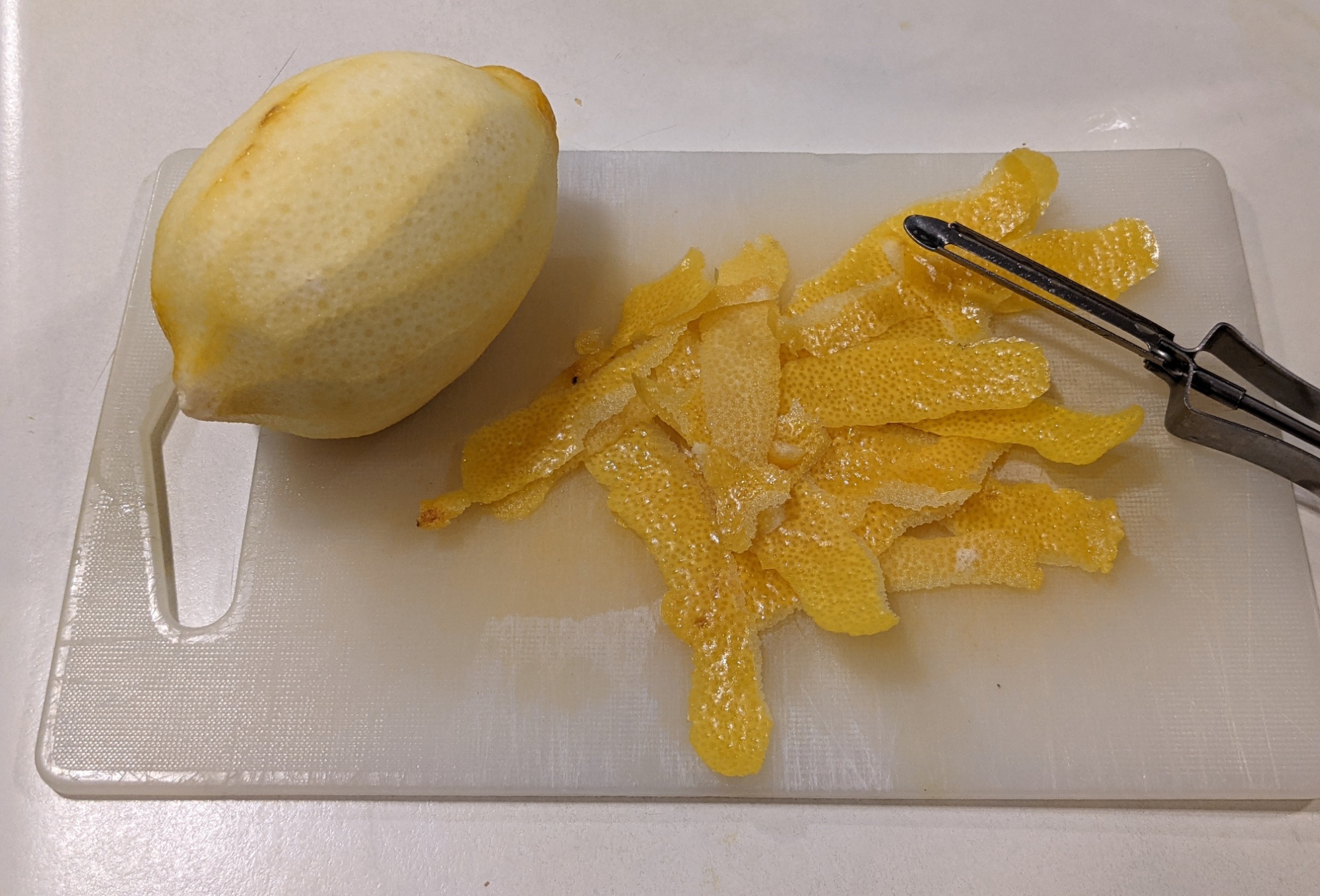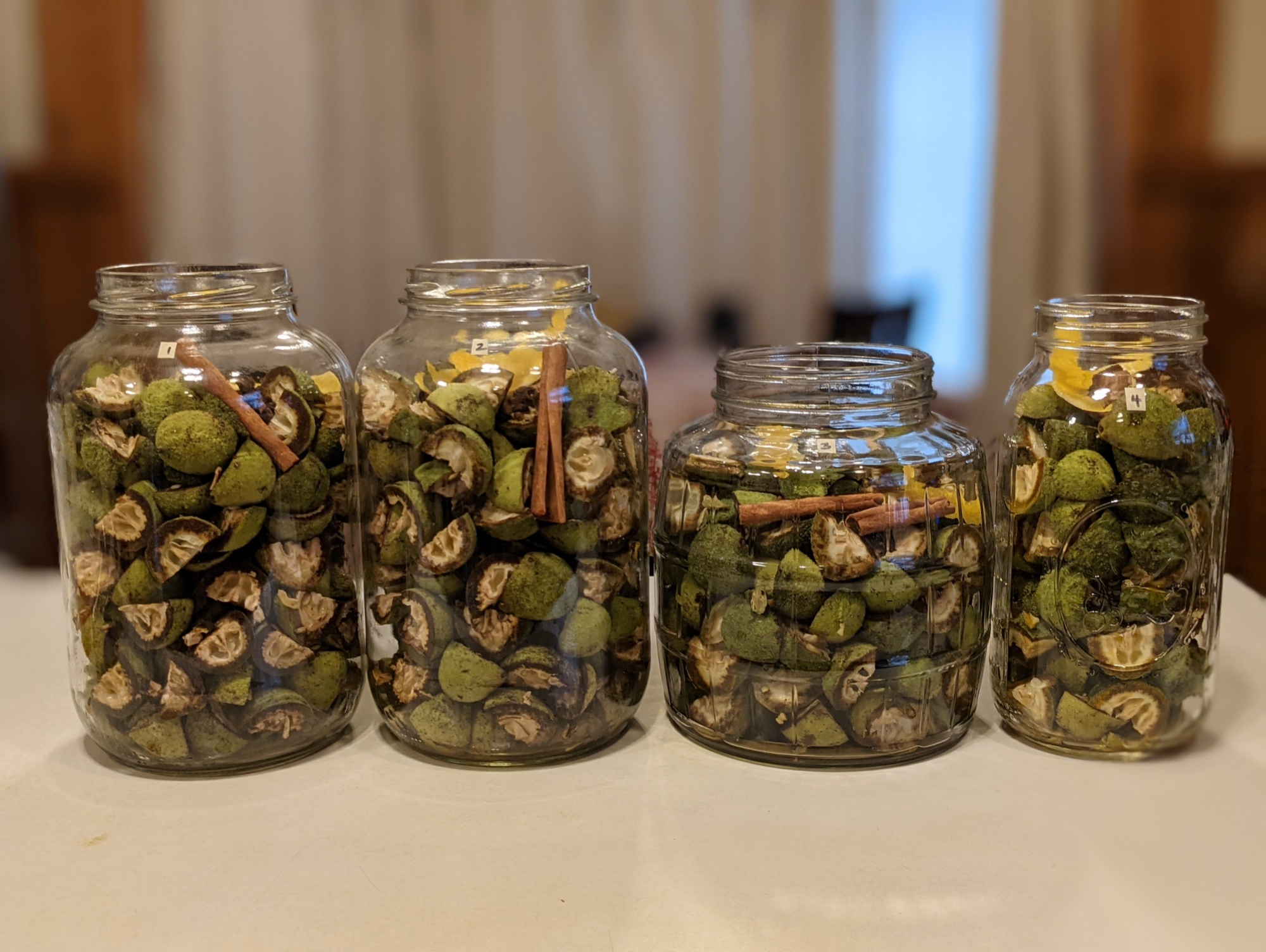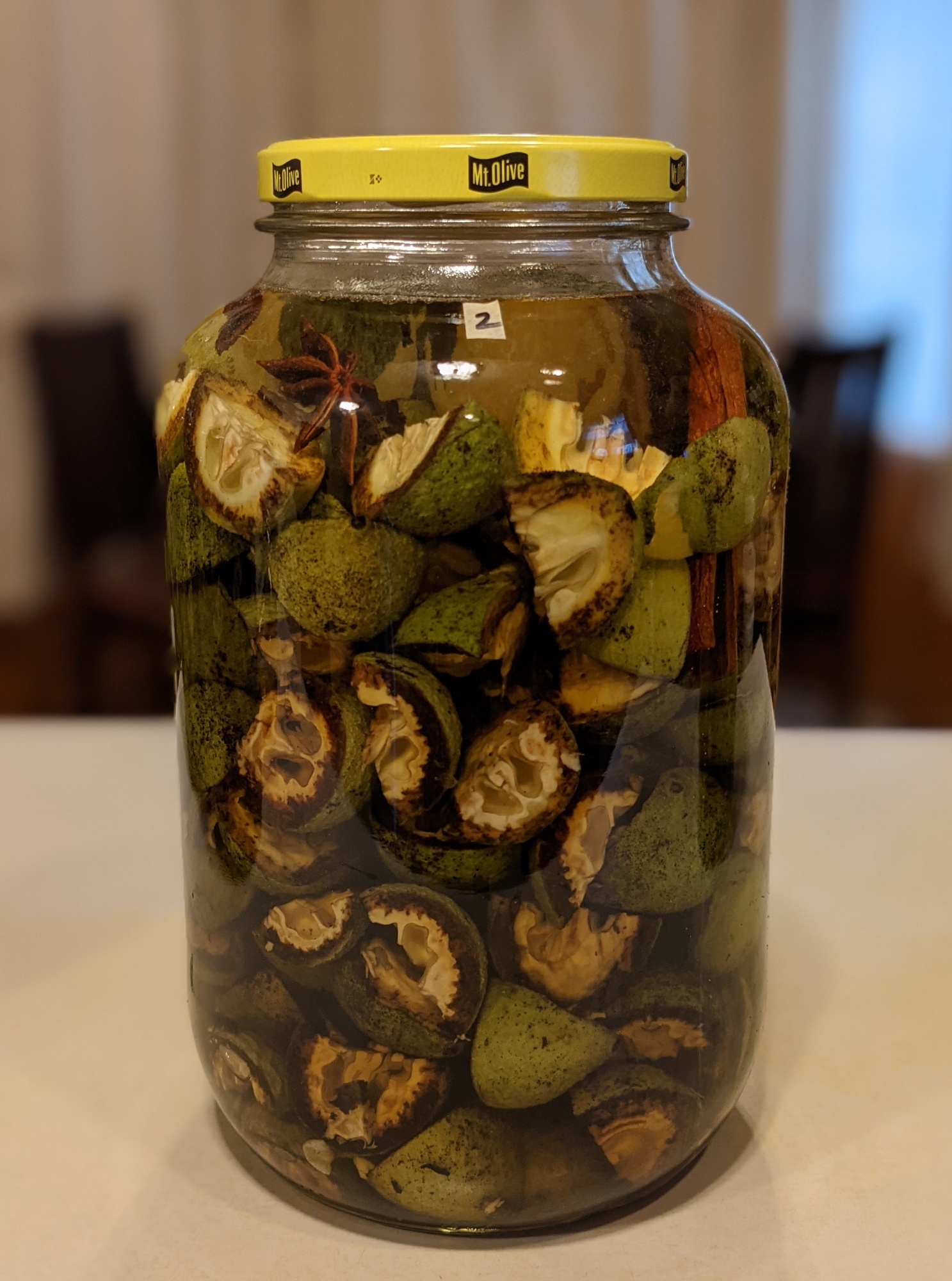
The walnut trees are producing this year – hurrah!! Last year was, to my disappointment, a bust. With the last of the Nocino left from the 2019 batch looking forlorn in its mostly-empty bottles, I happily set about making another – and bigger – batch!
2019 was my first year making black walnut liqueur, and I cautiously made just shy of 2 gallons – without really knowing how it would taste (and I varied the spices a bit between the two batches), I didn’t want to be stuck with a large amount of something I wasn’t keen on drinking.
After about 6 months had elapsed, the infusion looked ready, so I strained it and bottled it. At sampling, I was floored: it was amazing! It was smooth, nutty, and complex, with a slight, palate-awakening touch of bitterness. Why had I not made this before? All of those black walnuts, too tough to crack and eat, had just been left for the squirrels..!
A lesson learned from the last round: pick the walnuts earlier in the year so that they’re very soft and the shells haven’t begun to form yet. I had a number of green walnuts that, while not mature, had begun to form shells within the husk and were rather a challenge to quarter with a knife. This year, I started monitoring the trees earlier and looking for signs that the nuts were at the right point to harvest. Based on what I found when I began opening them, I made the right decision to collect them when I did.

The process begins with picking (immature) green walnuts – I was able to fill a gallon pail fairly quickly, thanks to the multiple trees here. I did get my workout walking to all corners of the property – the trees seem to like to grow near the fence lines – and, of course, it was hot as all get-out. No matter, I’d forget all the unpleasantness once I sampled the finished product.
Then, all those golf ball-sized walnuts needed to be quartered.
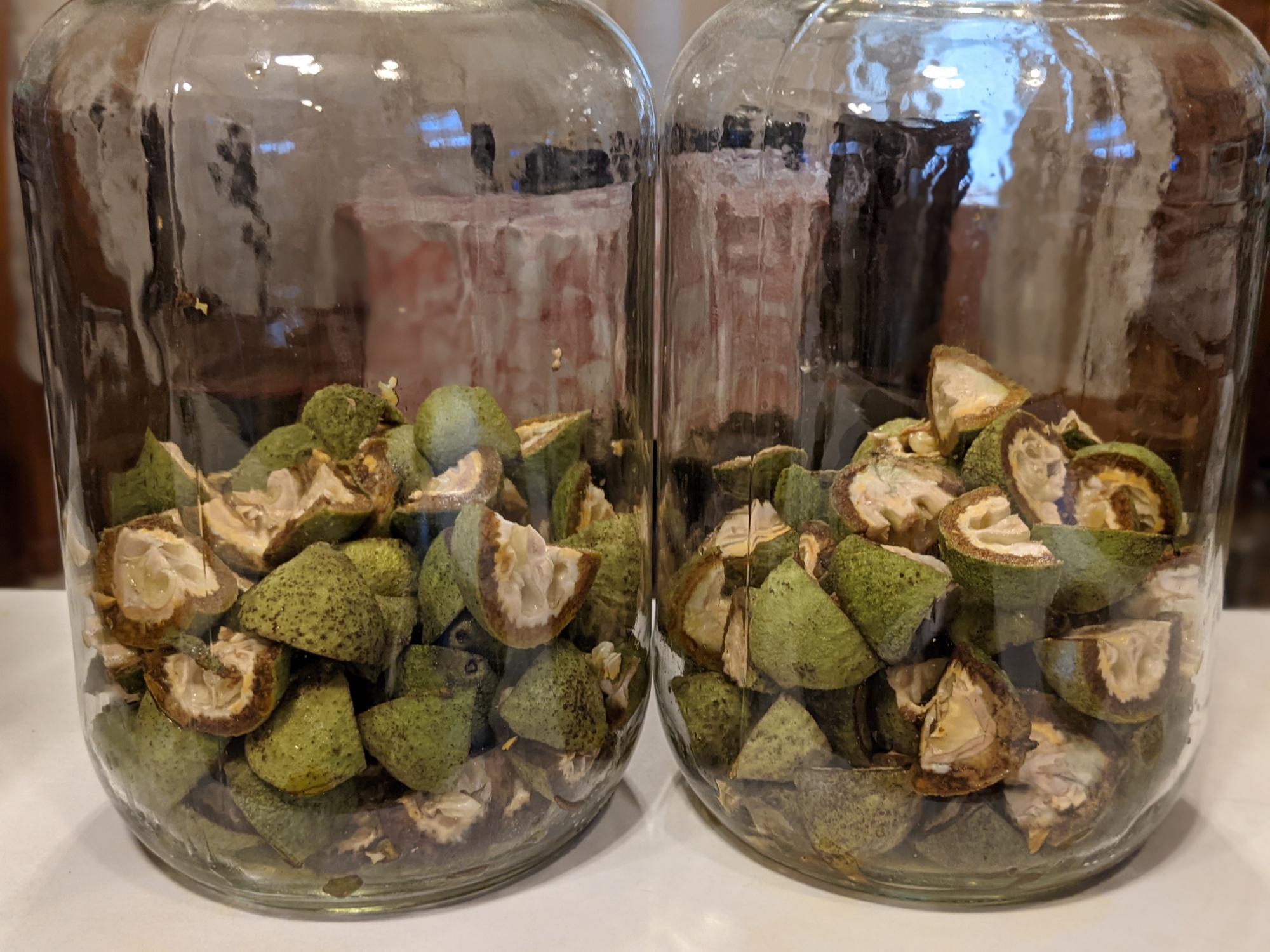
It was interesting to see how much liquid was inside the green walnuts’ centers.
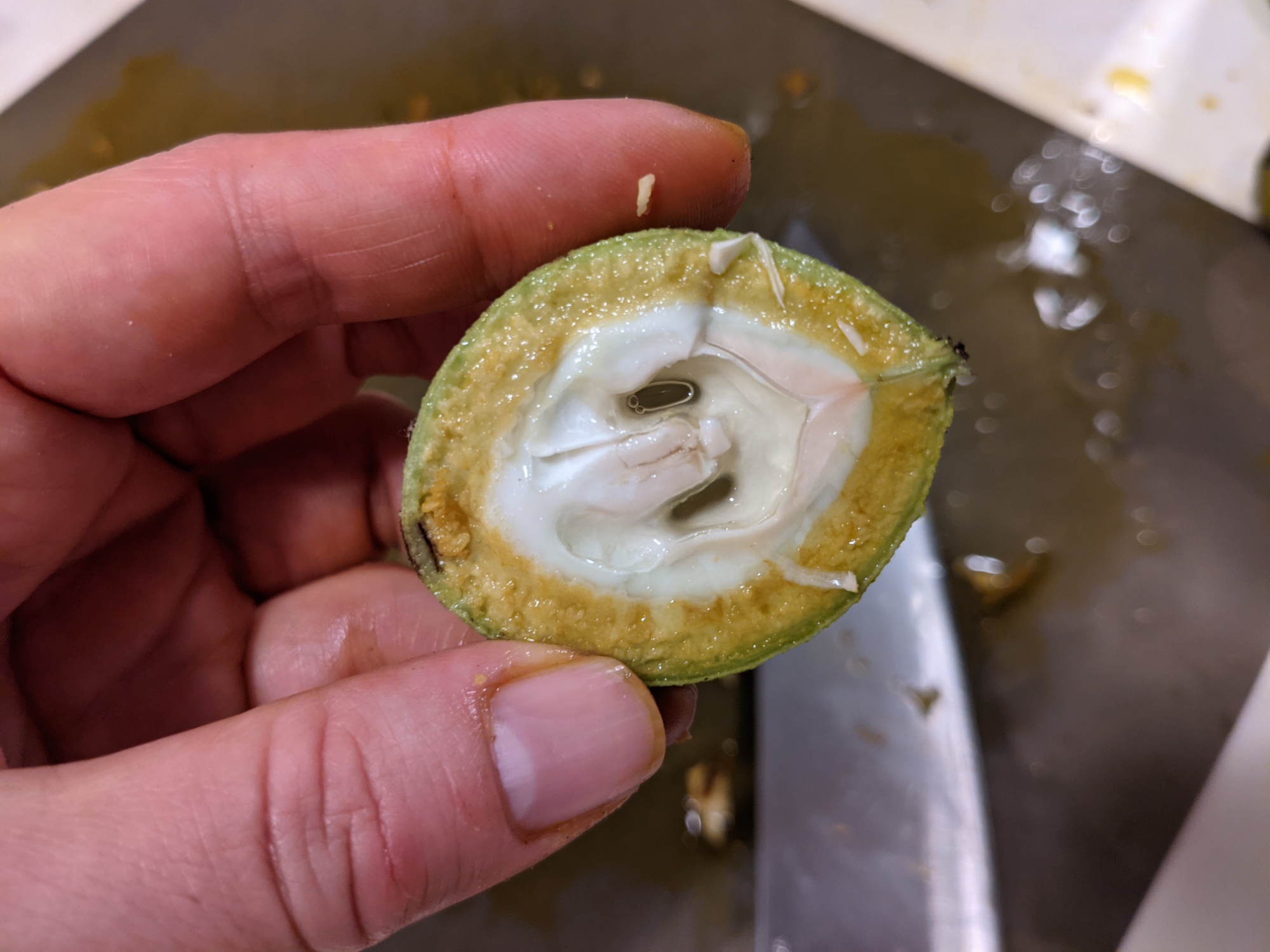
It reminds me of coconuts – they filter the water from the ground as it passes up and into the young coconuts, and the coconuts are full of nourishing liquid that has been called “the perfect sports drink“. Presumably, the walnut tree has similarly drawn moisture up through its roots, traveling up the trunk and branches to the developing walnuts.
It’s easy to tell if the walnut is at the right point of maturity: it will be firm, but still soft enough for a sharp knife to cut right through it without much effort – I’d say it’s comparable to cutting through a carrot. If it’s a little more mature than is ideal, I may need to tap the top (dull part) of the knife to help the blade get all the way through the nut. The cutting of walnuts is a risky business: they’re round, so it’s easy for the knife to slip, and it takes some force to get through some of the nuts that have begun to develop nascent shells. Being focused on safety and knowing where the knife is in relation to my fingers is very important.
Once the jars were full of the prepared nuts, I added the spices, lemon peel, and vodka.
This year, I opted for a slightly more expensive (and smoother) 80-proof vodka that should result in an even more enjoyable finished liqueur. I keep “tincturing” (bottom shelf) vodka on hand for making tinctures, but it’s not exactly “sipping” vodka. I have a feeling that this batch will be the best yet…only 6 months until I can sample it!
After cutting up all those nuts, my hands were stained, the cutting board was stained, the countertop was stained. The stain actually went under my nails and dyed my hands dark brown, but only partially – so instead of looking like I got a nice tan, I have “Dumbledore hand”. 😱
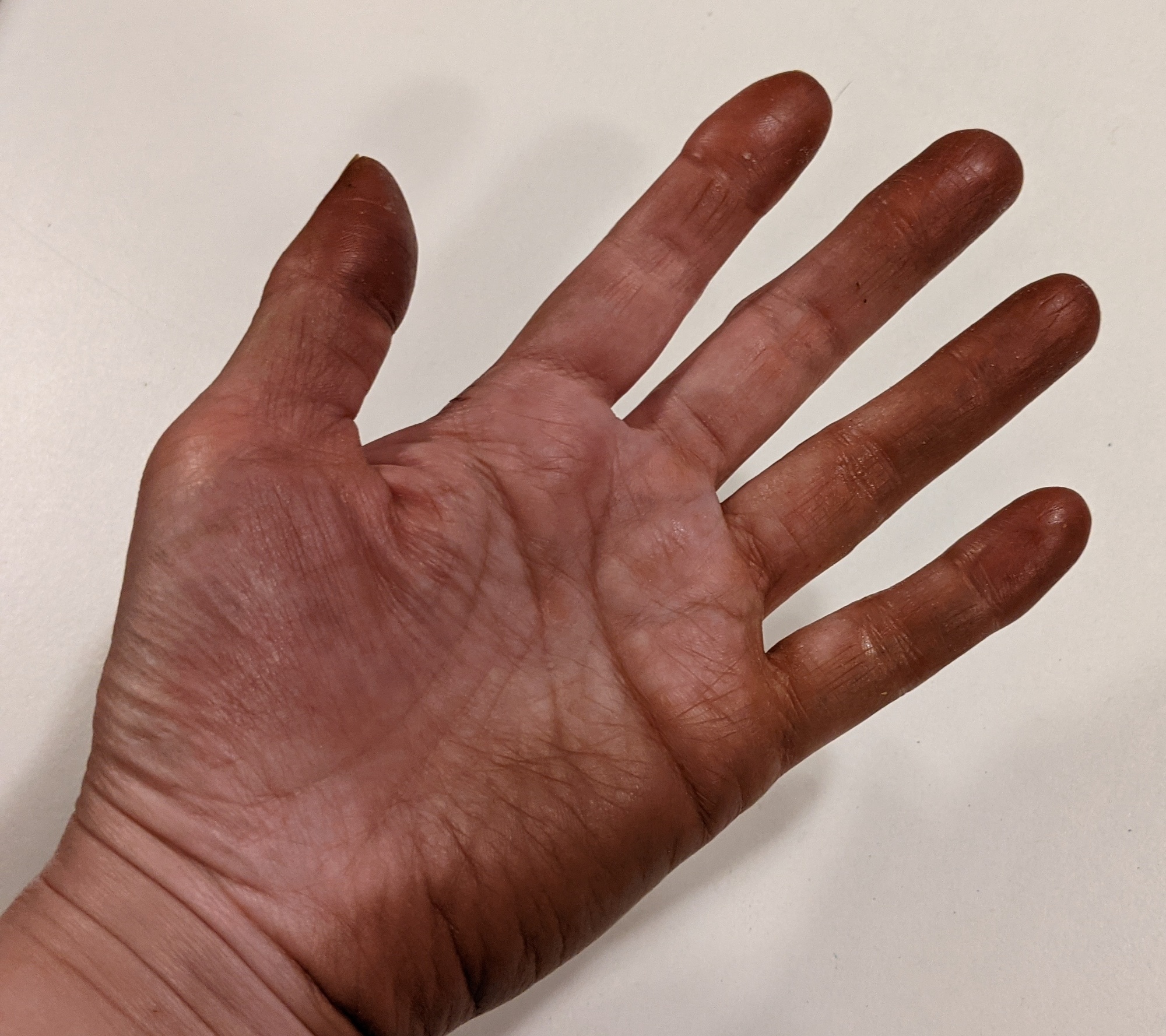
Yes, it looks pretty weird, and it makes me laugh when I see my left hand, the one that handled the cut walnuts. Black walnut creates a surprisingly stubborn stain, and the lids of the jars in which this liqueur infuses are permanently dyed, so I just reuse them specifically for this purpose (like my kimchi jar lids).
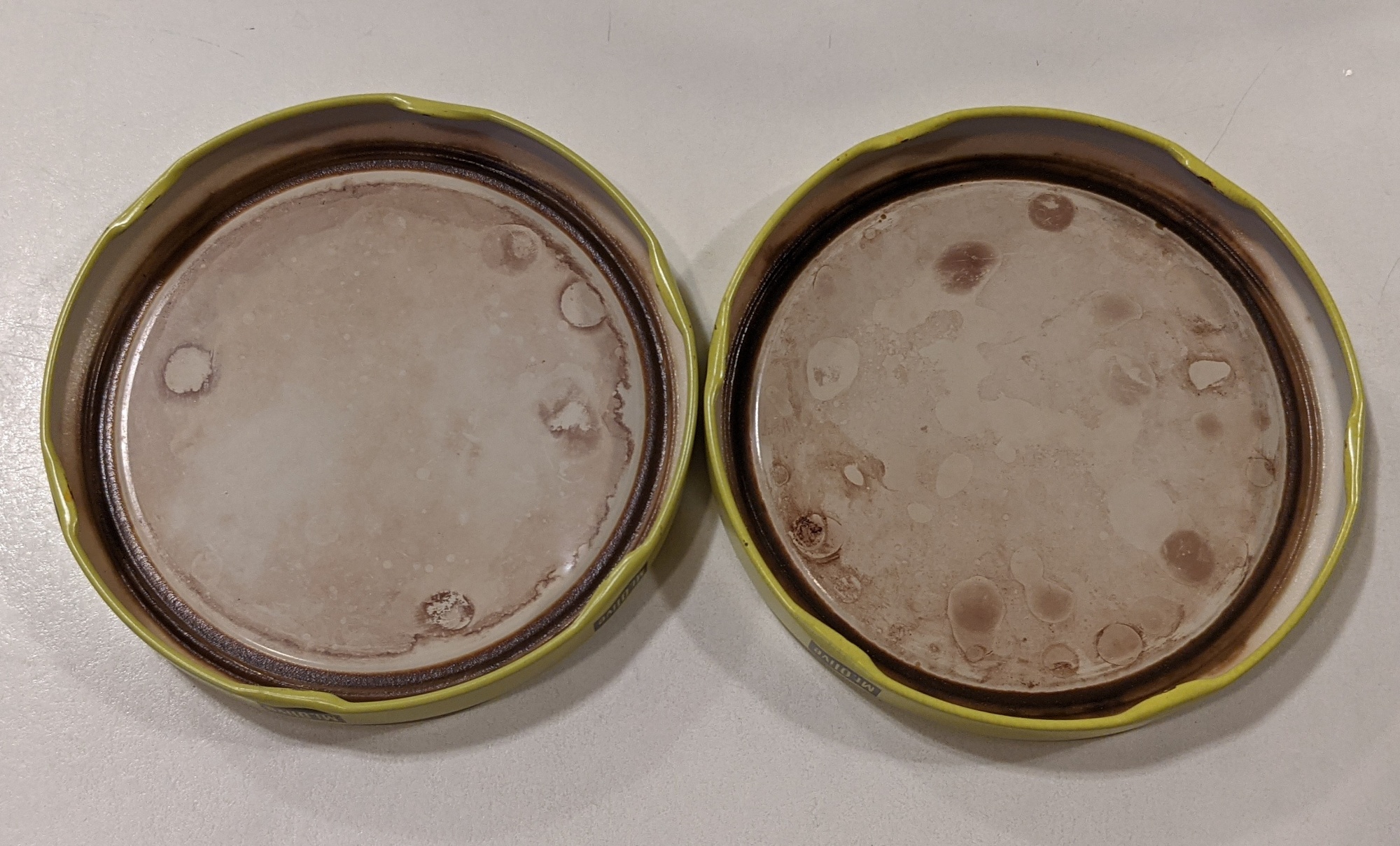
Sacrifices must be made for the craft.

